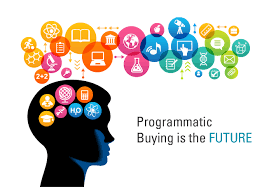 This saying has been around since the 1960s, but seems to become more and more relevant to our lives every single day. Originally coined by the Navy, the inspiration for the phrase came from the realization that systems work best when they’re simple rather than complicated. So going forward, everything the Navy designed was made that with that directive: KISS (Keep it simple, stupid) and Sell. It worked like a charm: Systems were more effective and efficient than ever before.
This saying has been around since the 1960s, but seems to become more and more relevant to our lives every single day. Originally coined by the Navy, the inspiration for the phrase came from the realization that systems work best when they’re simple rather than complicated. So going forward, everything the Navy designed was made that with that directive: KISS (Keep it simple, stupid) and Sell. It worked like a charm: Systems were more effective and efficient than ever before.
Nowadays, companies across all industries are embracing this idea and building products and processes with the KISS principle in mind. They’re hiring folks who keep it simple, and teaching current employees how to adopt the methodology.
Ever wonder why Apple products look and operate the way they do? Here’s how Steve Jobs described the design idea of the company’s products: “It all comes down to this: Let’s make it simple. Really simple.”
Customers want quick, easy, and painless. They want simple. In fact, according to this Harvard Business Review article, the biggest driver behind a consumer’s decision to purchase is simplicity. With this in mind, sales reps are tasked with the challenge of taking a product or a service that took a long time to build, and making it simple.
It’s time to bring the KISS principle to sales. Here are three tips for how to make purchase decisions as simple as possible for your buyers.
1) Watch your words.
Most sales reps get so caught up in explaining all the features and small details of their service or product that they forget to focus on why the customer is talking to them in the first place: They want to solve a problem. That’s it.
For instance, if you are selling a medical procedure to a patient, instead of saying, “We’re the best hospital in Asia with a J.C.I accreditation and top-of-line technology, electronic medical records and best-in-field medical experts with 20 years of experience and internationally benchmarked success rates”, try saying “You need a knee replacement procedure so that you can have a painless stroll down the park for years to come, so why not let our experts take care of that for you? We assure you of that morning walk that you have been missing”
In addition, focus on the benefits of your service. In a study, Patrick Spenner and Karen Freeman analyzed two types of sales approaches. The first segment focused on the specifics of a product, and provided detailed information on how it was built, while the second concentrated solely on benefits and highlighted customer reviews. The research revealed that the companies that focused on the benefits were more likely to convert a customer than their peers.
Bottom line: Customers want to know if the product fixes an issue, and what other buyers think of it. Don’t go overboard when delivering information.
2) Embrace content.
According to Forrester, a buyer is anywhere from 66 to 90% through their buying journey before they talk to a salesperson. Today’s buyer knows as much as the seller. And while it’s great to be able to hop on the phone and walk someone through your product, odds are they’re already familiar with the features of your offering well before you even reach out. They’ve done the research, put in the time, and are now just looking for guidance.
That’s where content comes in. In this Forbes article, Roger Dooley argues that prospects view trustworthy materials as a major part of their buying decision, particularly from fellow buyers. This assumes immense importannce in a healthcare field where your prospective buyers (that is the patients) always look for a feel-good factor to rely on for their decision making. A factor could be a customer reviews, public interest stories, patient videos, blog posts, third-party reports, or testimonials from customers. Buyers want to see trustworthy information before they make a decision.
Salespeople would be wise to gather and source content that tells a clear and simple story: the product works, and people like it. Technical user manuals or complex guidelines will only serve to muddy the message.
3) Tell a clear story… but keep it simple, stupid!
According to Marketing Experiments’ Dr. Flint McGlaughlin, “Clarity trumps persuasion.” The best salespeople bear this axiom in mind when writing emails, delivering demos, and negotiating. “Write a page from your buyer’s diary”. Master sales expert always relate with the buyers through mileposts of compassion, care and comfort.
Human beings are wired to crave logically flowing narratives. Dr. Michael Gazzaniga discovered that our left brain and right brain hemispheres fill in the blanks for one another to find a narrative.
What does this mean for salespeople? Telling a clear, easy-to-follow success story explaining your product’s benefits will help improve sales. If you tend to be long-winded or opaque, try to boil down your value proposition into one concise sentence, or craft a Twitter pitch.
In today’s complex world, keeping it simple is critical in sales. Customers don’t want to jump through hoops to get what they want; instead, they want easy to follow language, trustworthy information, and a clear story from their salesperson. By using what made the Navy so successful, sales reps can now KISS and make deals.
Hey, Thanks for making it this far! You know what, I would love to hear from you. If you’ve got a question or an opinion on this post, please leave your comments. I promise to read and respond back.
And by the way, a rap on knuckles or a gratifying praise are welcome from you!







One Response
Marketing the Apple-way is to keep it Simple. “How would Apple do it?!” , we should keep asking ourselves